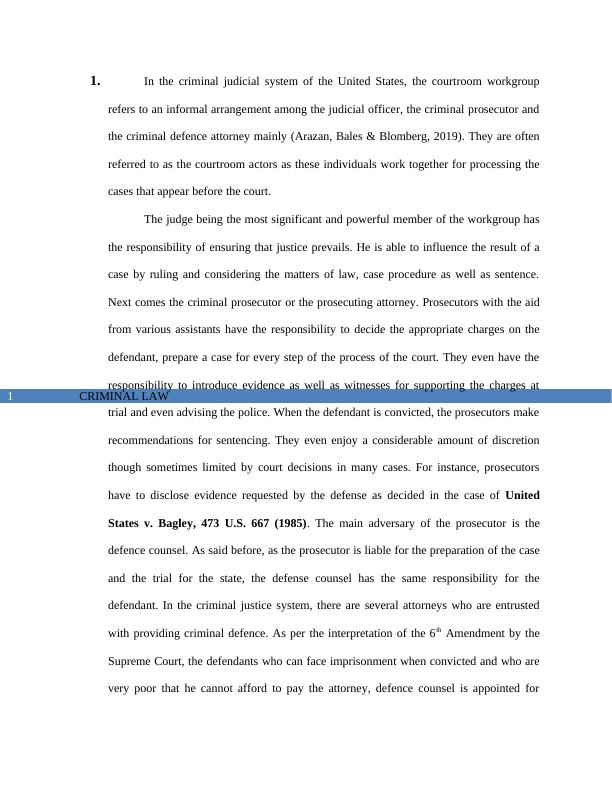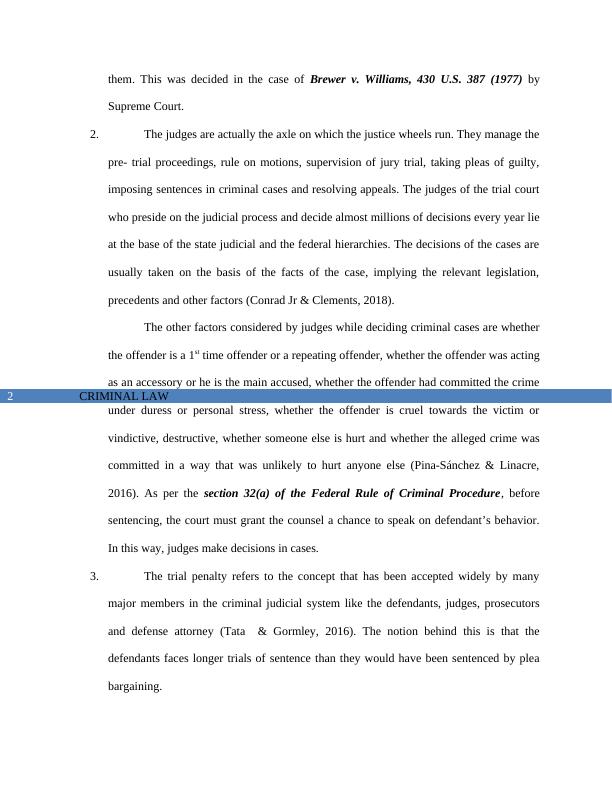Criminal Law Assignment 2022
Answering questions about the composition of the courtroom work group, judges' decision-making process, factors influencing sentencing decisions, the role of plea agreements, the appellate process, problem-solving courts, and proposing specialized courts.
8 Pages1764 Words28 Views
Added on 2022-10-11
Criminal Law Assignment 2022
Answering questions about the composition of the courtroom work group, judges' decision-making process, factors influencing sentencing decisions, the role of plea agreements, the appellate process, problem-solving courts, and proposing specialized courts.
Added on 2022-10-11
ShareRelated Documents
End of preview
Want to access all the pages? Upload your documents or become a member.
Indigent Defense - Efficacy of Lawyers and Attorneys
|3
|670
|18
Criminal Law- Criminal Justice System of the U.S
|4
|779
|15
Criminal Law Case Study Miranda v. Arizona 2022
|5
|1190
|21
PSSC – Police & Investigations
|4
|919
|166
Criminal Justice Assignment 2022
|7
|1468
|12
The World's Most Powerful People List -
|6
|1542
|16



